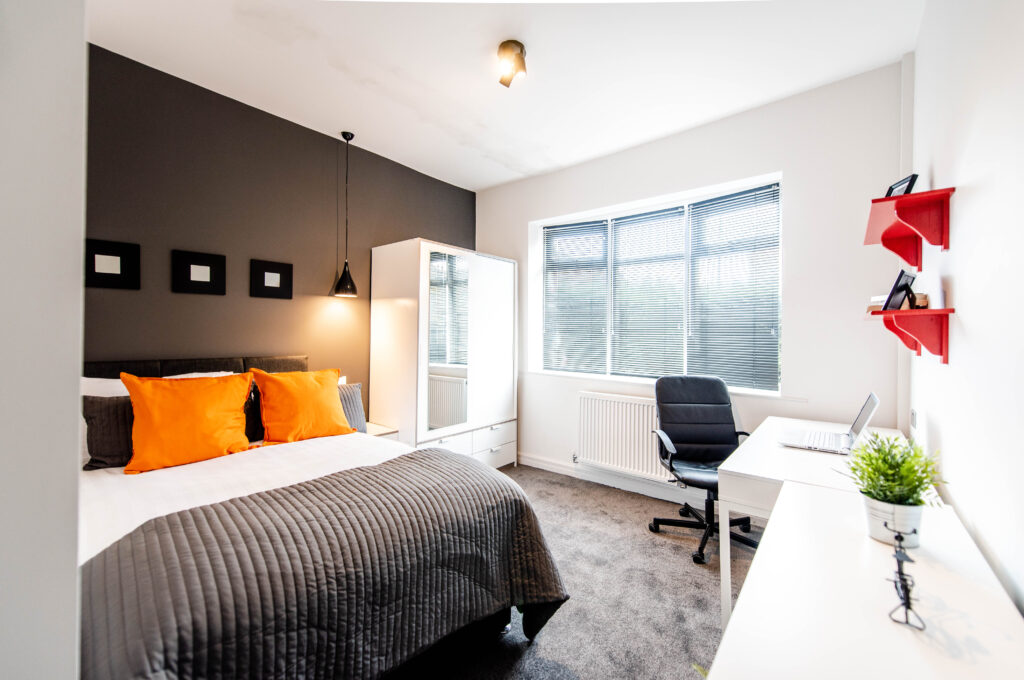When it comes to marketing your HMO property, first impressions are everything. As a landlord, you want to showcase your property in the best possible light to attract potential tenants quickly and efficiently. One of the most effective ways to achieve this is by investing in HMO professional photos. While it may be tempting to save money and take photos yourself, this can be a false economy. Here’s why professional photography is crucial for your HMO property and how it can impact your bottom line.
The False Economy of Skipping HMO Professional Photos
Many landlords believe that taking photos with their phone is sufficient, especially when they are mindful of their budget. However, this approach often leads to longer void periods and missed rental income. Properties marketed with high-quality photos attract more attention, which can significantly reduce the time your property remains vacant.
Cost of HMO Professional Photos vs. Cost of Voids
Let’s break down the costs. A professional photoshoot for your HMO property may cost around £300-£500. This expense is minor compared to the potential cost of void periods. For instance, if your HMO has an average rent of £600 per room and remains empty for an additional month due to poor-quality photos, you could lose £600 per room. If you have a five-room HMO, that’s a potential loss of £3,000 in just one month.
Moreover, the cost of professional photos is insignificant compared to the overall refurbishment costs. After spending thousands on refurbishing your property, skimping on photography is like baking a beautiful cake and then serving it without icing. The photos are what will draw tenants in and showcase the quality of your refurbishment.
Why HMO Professional Photos Matter
Professional photographers have the skills, equipment, and experience to capture your property in the best possible way. They know how to use lighting, angles, and staging to highlight the key features of your property. Here are a few reasons why professional photos make a significant difference:
Enhanced Visual Appeal
Professional photos make your property look more inviting and spacious. Photographers use wide-angle lenses to capture the full scope of a room, ensuring that potential tenants get a clear and attractive view of the space.
Increased Online Engagement
Listings on platforms like SpareRoom with high-quality photos receive more views and enquiries. Properties with professional photos stand out more in online listings, leading to increased engagement from potential tenants. This increased engagement can lead to quicker tenancies and reduced void periods.
Competitive Advantage
In a competitive rental market, having professional photos can set your property apart from others. Potential tenants are more likely to be attracted to listings with clear, high-quality images. This competitive edge can make all the difference in securing tenants quickly.

Staging Your Property for Success
In addition to professional photography, staging your property can further enhance its appeal. Staging involves arranging furniture and decor to create a welcoming and aesthetically pleasing environment. Here’s why staging is essential:
Showcasing the Property’s Potential
Staging helps tenants envision themselves living in the property. It highlights the functionality of each room and can make small spaces appear larger and more usable. When tenants see a well-staged property, they are more likely to feel a connection and make an enquiry.
Highlighting Key Features
Staging allows you to draw attention to the best features of your property. Whether it’s a spacious living area, a modern kitchen, or a cosy bedroom, staging can enhance these features and make them stand out in photos.
Creating a Positive First Impression with HMO Professional Photos
A well-staged property looks tidy, organised, and well-maintained. This positive first impression can make potential tenants more confident in the quality of the property and the landlord.
The Unique Opportunity When the Property is Empty
The ideal time to take professional photos and stage your property is when it is empty and newly refurbished. At this stage, the property is at its best—clean, uncluttered, and ready to impress. Once the property is tenanted, it will never look the same again. Tenants’ personal belongings and varying levels of tidiness can detract from the property’s appeal in photos.
By capturing high-quality images during this unique window, you ensure that you have the best possible marketing materials to use for future listings. These photos can be reused whenever the property becomes vacant, making them a long-term investment in your marketing strategy.
Confidence Property’s Approach
At Confidence Property, we understand the importance of presenting your HMO property in the best possible light. We recommend all our landlords invest in professional photography and staging to maximise their property’s potential. Our experience has shown that this approach leads to quicker tenancies and happier tenants. By partnering with us, you can benefit from our expertise and commitment to showcasing your property effectively.
Maximise Your Property’s Potential
Investing in HMO professional photos and staging for your HMO property is not just an added expense; it is a strategic investment in reducing void periods and maximising rental income. The cost of professional photos is minimal compared to the potential losses from extended vacancies. High-quality images attract more enquiries, create a competitive advantage, and present your property in the best possible light.
Don’t fall into the trap of false economy. Ensure your property stands out in a crowded market by investing in professional photography and staging. This small investment can make a significant difference in your property’s success.
At Confidence Property, we offer a bespoke professional photo and staging service to help you maximise your property’s potential. To find out more, click here for a callback.










